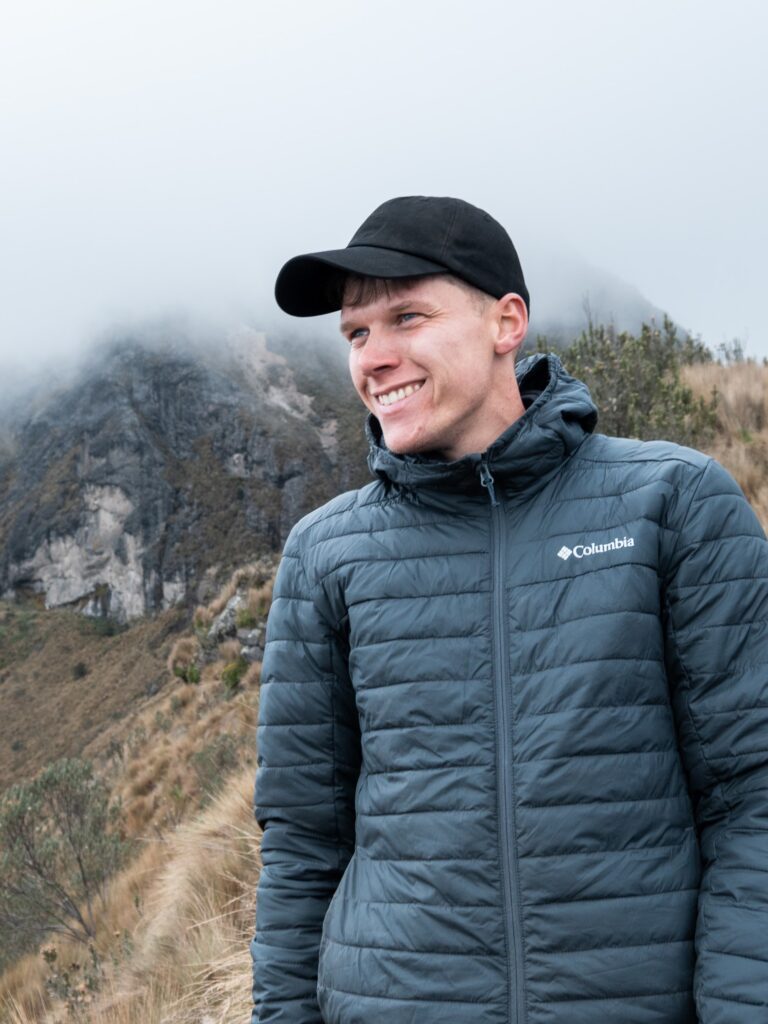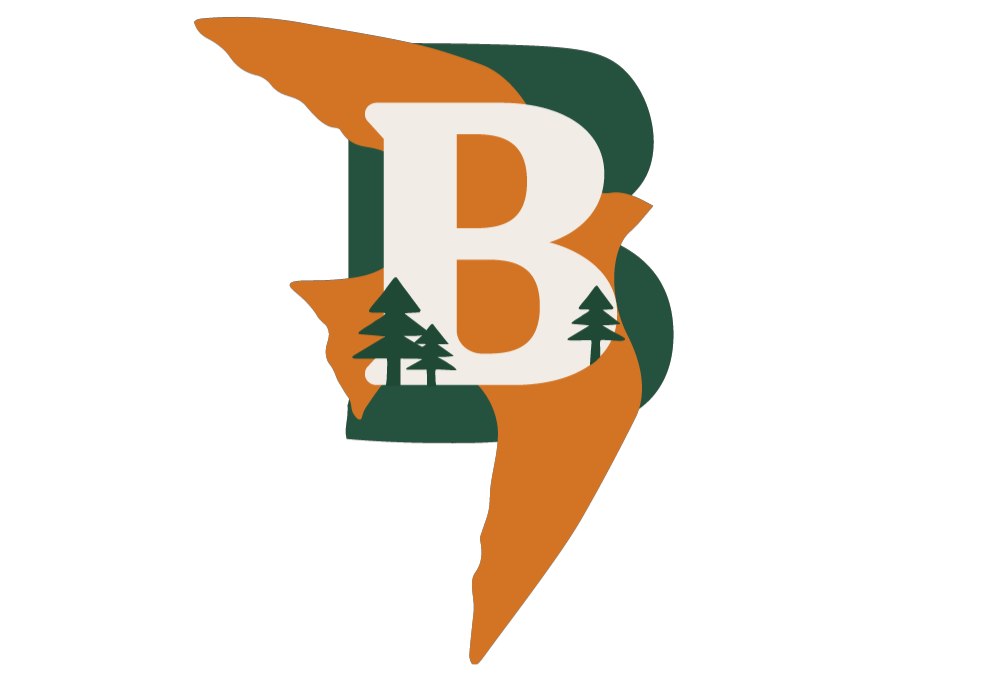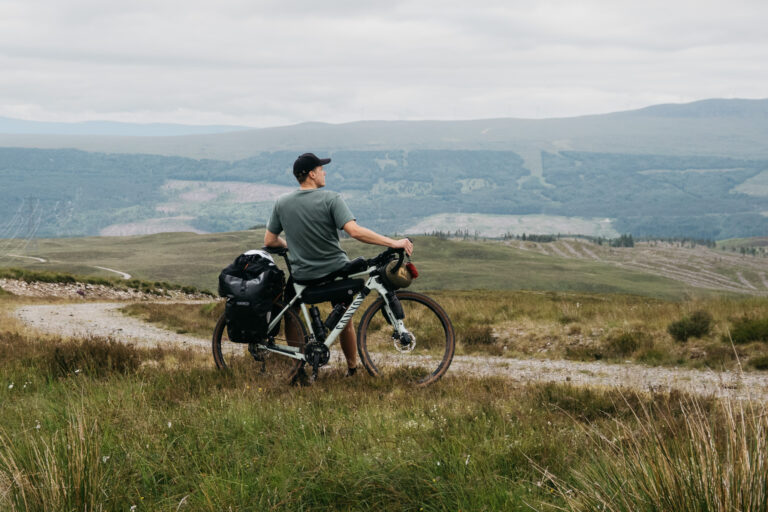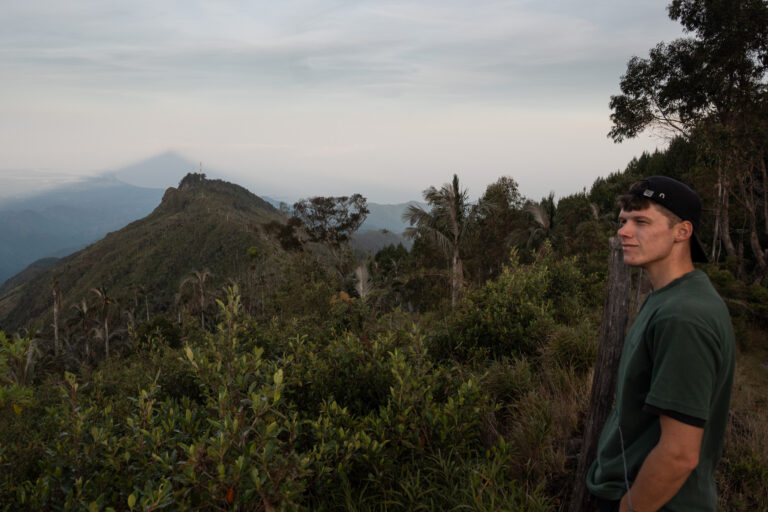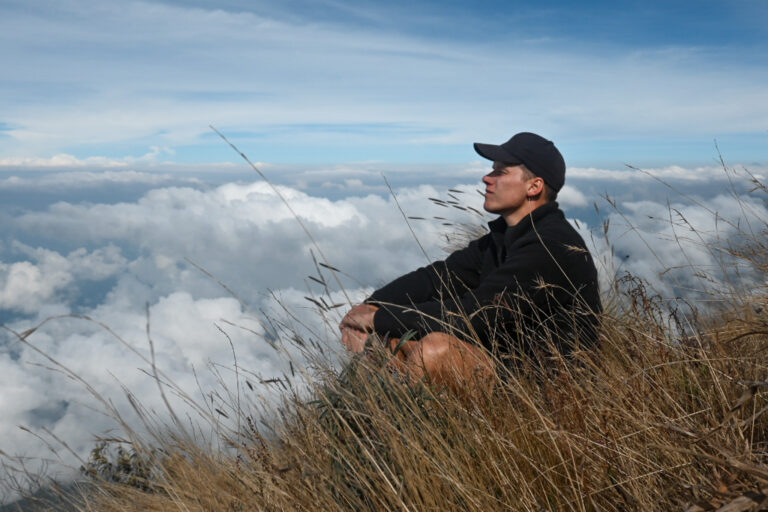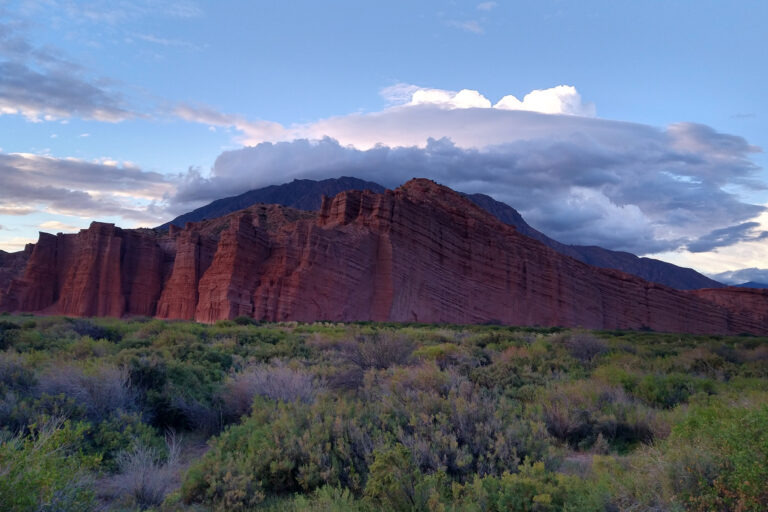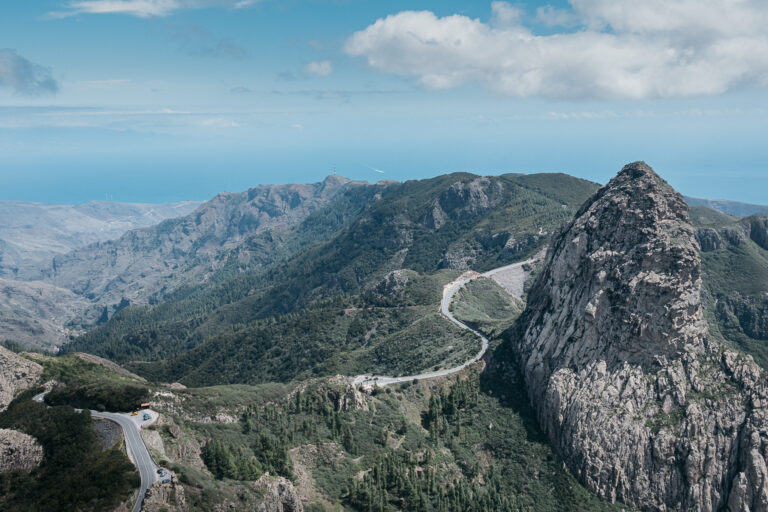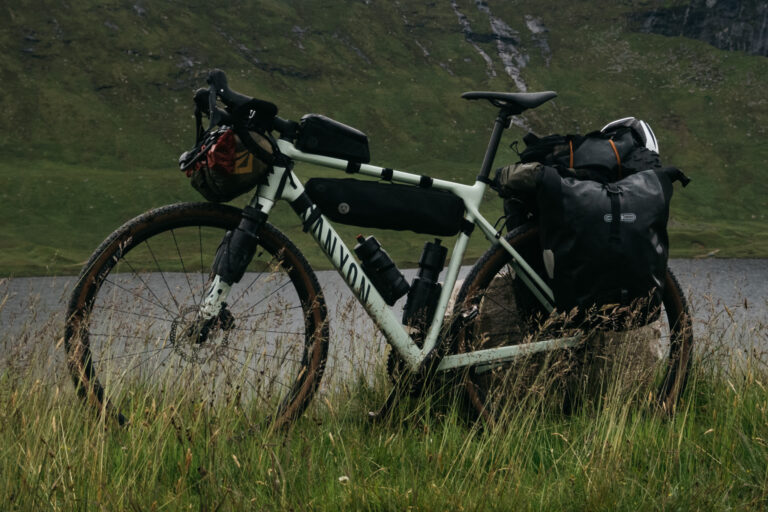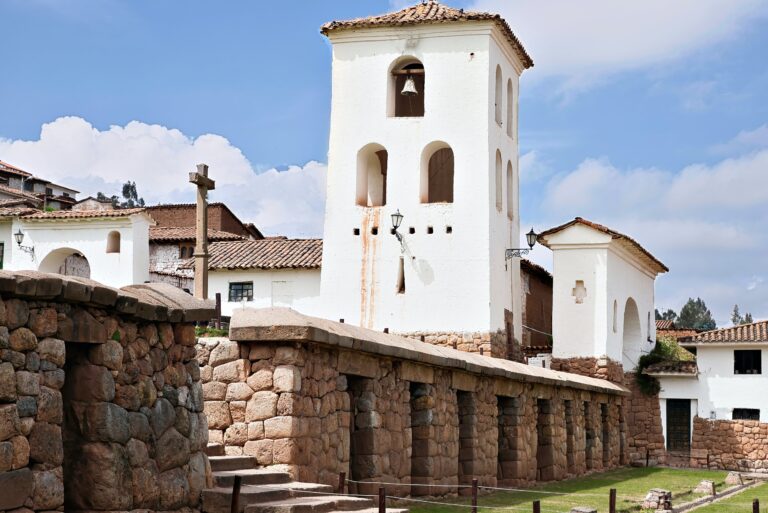Bikepacking mistakes can turn an exciting adventure into a painful experience. In this guide, I’ll share 5 beginner bikepacking mistakes I made so you don’t have to. (9 minutes read time)
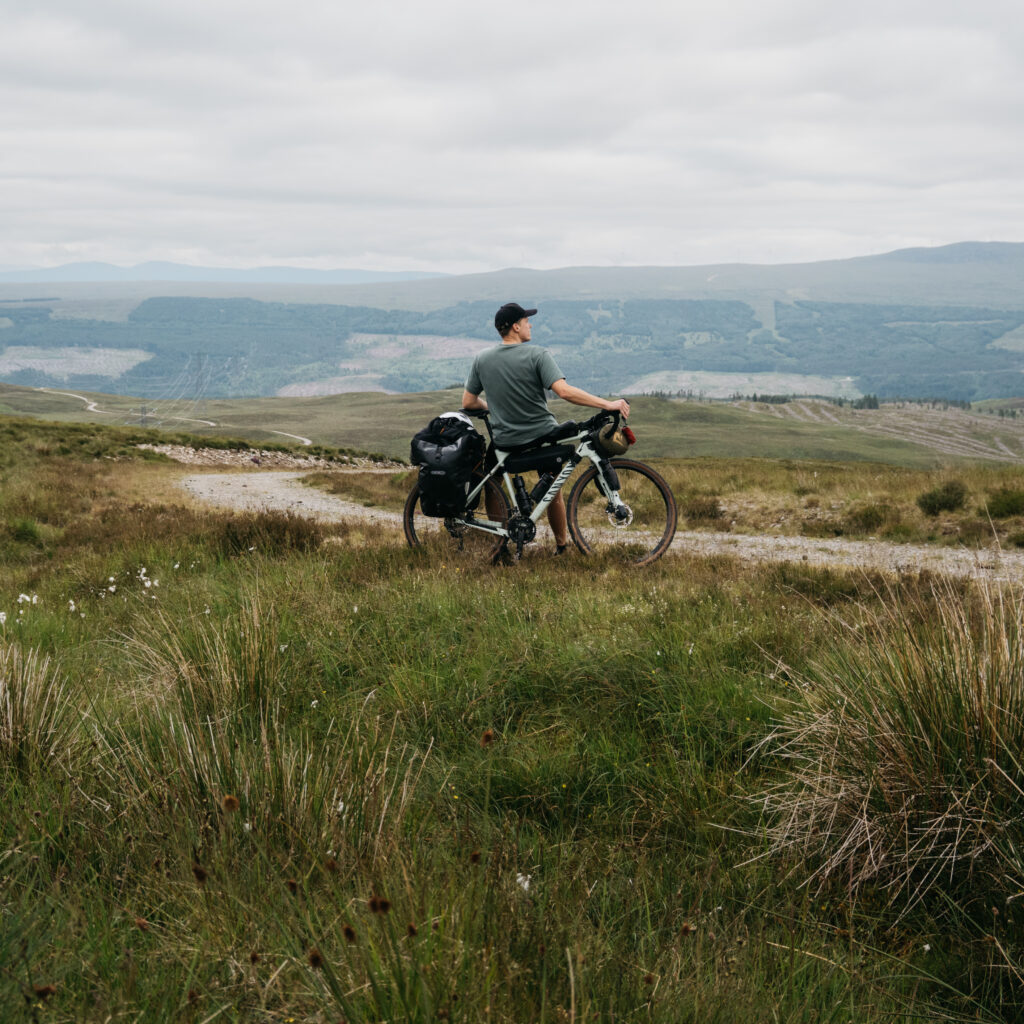
5 beginner bikepacking mistakes—mistakes I made, so you can avoid them on your next bikepacking trip.
1. Taking too much stuff
Mistake number one—and probably one of the most common beginner bikepacking mistakes—is packing the bike way too heavy.
And I can definitely relate.
On my very first bikepacking trip, from home to the French island called Île de Ré, my bike was ridiculously overloaded. I still remember weighing my bags before leaving: the total came to 37 kilograms (!).
That’s an insane amount.
Today I carry around 20 kilograms, which is almost half the weight.
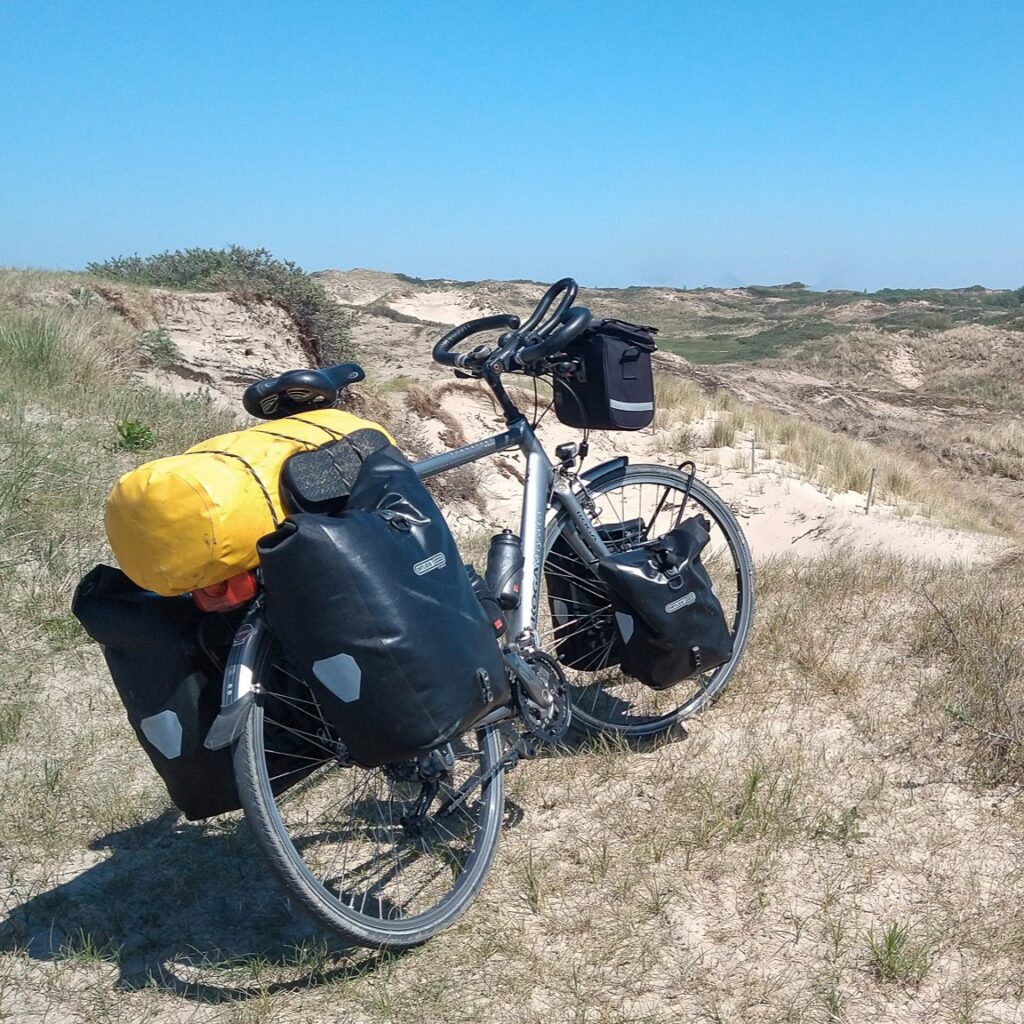
I overpacked for a few reasons:
- I didn’t really know what to bring: I packed “just in case” items that I never actually used.
- I first wanted to find out if I liked bikepacking enough, before putting money into lighter gear that cuts down weight and bulk.
- I brought way too many clothes. Instead of choosing versatile pieces, I overpacked with shirts, pants, and a jacket that I ended up never wearing.
Pro tip, start simple: Try a short bikepacking trip before investing in expensive ultralight gear. A 2–3 day trip is enough to see whether you really enjoy it. You can read my post about The Overnighter here, where I explain how to well prepare for your longer bikepacking trip.
Also, I feel like prices are getting lower. Nowadays you can buy lightweight gear of decent quality at stores like Decathlon and REI.
2. Do not use Google Maps for navigation
Don’t rely on Google Maps for navigation—there are much better apps for bikepacking navigation than Google Maps.
On my very first cycling trip, I relied on Google Maps for the first week, and sometimes it was pure chaos.
Google Maps occasionally chose strange routes and definitely didn’t pick the most scenic or cyclist-friendly roads. I remember paths overgrown with grass and bushes, barely recognizable as paths at all.
Also, Google Maps often chooses the fastest route from A to B—but that’s normally not what you want when bikepacking. Personally, I absolutely prefer quiet, scenic side roads with as little traffic as possible.
So which apps should you use?
There are apps that let you choose your start and end points, for example Komoot and RidewithGPS. These apps are designed specifically for cyclists and selects the scenic cycling routes.
With Komoot, distances usually are a bit longer, but I personally prefer enjoying a beautiful ride over simply getting from A to B as quickly as possible.
In addition, Google Maps drains your phone’s battery quickly. I recommend downloading offline maps so you can still access them without internet or WiFi. Maps.me is a great app for this purpose.
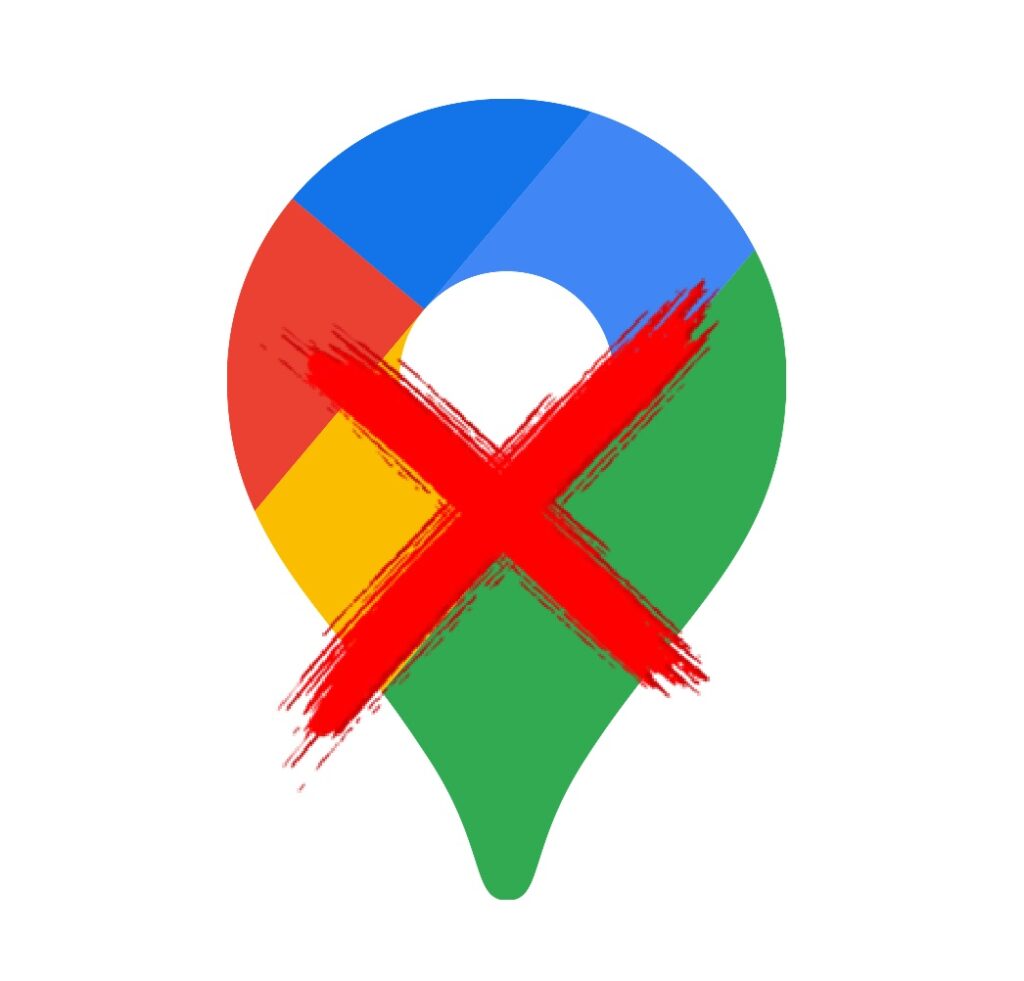
RidewithGPS:
With RidewithGPS, you can plan your route from start to finish exactly the way you want. You can do this for free on a PC or laptop, but on your phone, a subscription ($9.99/month or $79.99/year) is required. Once your route is created, you can export it as a GPX file and send it to your GPS or phone.
Komoot:
Komoot gives you an overview of optional cycling routes. Unlike RidewithGPS, you don’t create the route completely yourself, which makes it quicker. Also, you’ll find all the details for each stage: How long is the stage? How long will it take to cover the distance? How many meters do you ascend or descend? etc.
Maps.me (phone only)
I use this app all the time when backpacking South- and Central-America. It has a simple and clear overview and no ads. Also, you can download maps for free, and it takes up very little space on your phone. (this app is primarily designed for walking and hiking, but it found it works well for cycling too.)
3. Bad fuel, slow legs
Probably one of the most common beginner bikepacking mistakes: Bad nutrition.
Something else I learned the hard way, is choosing the right nutrition on a bikepacking trip. Simply put, some foods give you energy, while others make your legs feel like you’re cycling through mud.
DINNER:
Personal story (and I’m a little ashamed to admit this).
On my very first bikepacking trip to the southwest of France, I had no idea what to cook or eat and back then, my meals were anything but varied—
I ended up eating spaghetti bolognese for dinner 24 of the 30 days I was on the road.
Don’t get me wrong, pasta is a good choice for energy, but having more variety in your diet is far wiser. Nowadays, I eat a much wider range of foods on my trips.
Simply put, some foods give you energy, while others make your legs feel like you’re cycling through mud.
To avoid this beginner mistake, I recommend learning a few simple dishes before your trip. There are thousands of helpful videos on YouTube and countless blogs on this subject.
A few great food options for bikepacking
Nowadays there are plenty of great options for adventure food:
One quick and easy choice is the Knorr Good Pasta meals. Just add hot water, vegetables, and if you like some meat or cheese, and you got a fast, simple dish.
Even tastier and more nutritious, are the meals from Adventure Food. They may be a little more expensive than Knorr, but I personally think they taste way better.
Both options are lightweight, making them excellent choices for a bikepacking trip.
One snack I never leave home without are nuts / trail mix. Nuts make an ideal and delicious snack. You can buy prepackaged nuts, or make your own mix. I personally like to combine, walnuts, almonds, and raisins. Sweating causes you to lose salt, and low sodium levels in your blood can make you feel tired or lead to cramps. That’s why I always bring some salted nuts with me.

LUNCH
For lunch, you might want to try tuna (or any canned fish) with some vegetables and either rice or bread. Canned tuna is compact, nutritious, and has a long shelf life, making it perfect for trips.
Nevertheless, lunch is usually the easiest meal to plan, and it’s often the most convenient time to stop somewhere and grab a bite, unlike breakfast or dinner.
BREAKFAST
On my first cycling trip, I approached breakfast very differently. I would buy it the day before at a supermarket or bakery—baguette or bread, jam, peanut butter, and yes, I even had a glass jar of Nutella.
At the time, it seemed convenient, but I quickly realized these items took up way too much space and added unnecessary weight to my pack.
You should go for:
- lightweight
- portable
- energy-dense
Below are three great breakfast options:
1. Oatmeal / Muesli / Granola
- Quick-cooking oats or instant oatmeal
- Mix it with dried fruit, nuts, seeds
- Powdered milk and just add hot water
2. Bread / crackers with toppings
- Use lightweight breads like tortillas or flatbreads
- Peanut butter, cheese, jam, etc.
3. Greek yogurt + fruit
- Add granola / oatmeal / muesli
- Mix in chia seeds for extra proteins
- Mix fruits, nuts, seeds
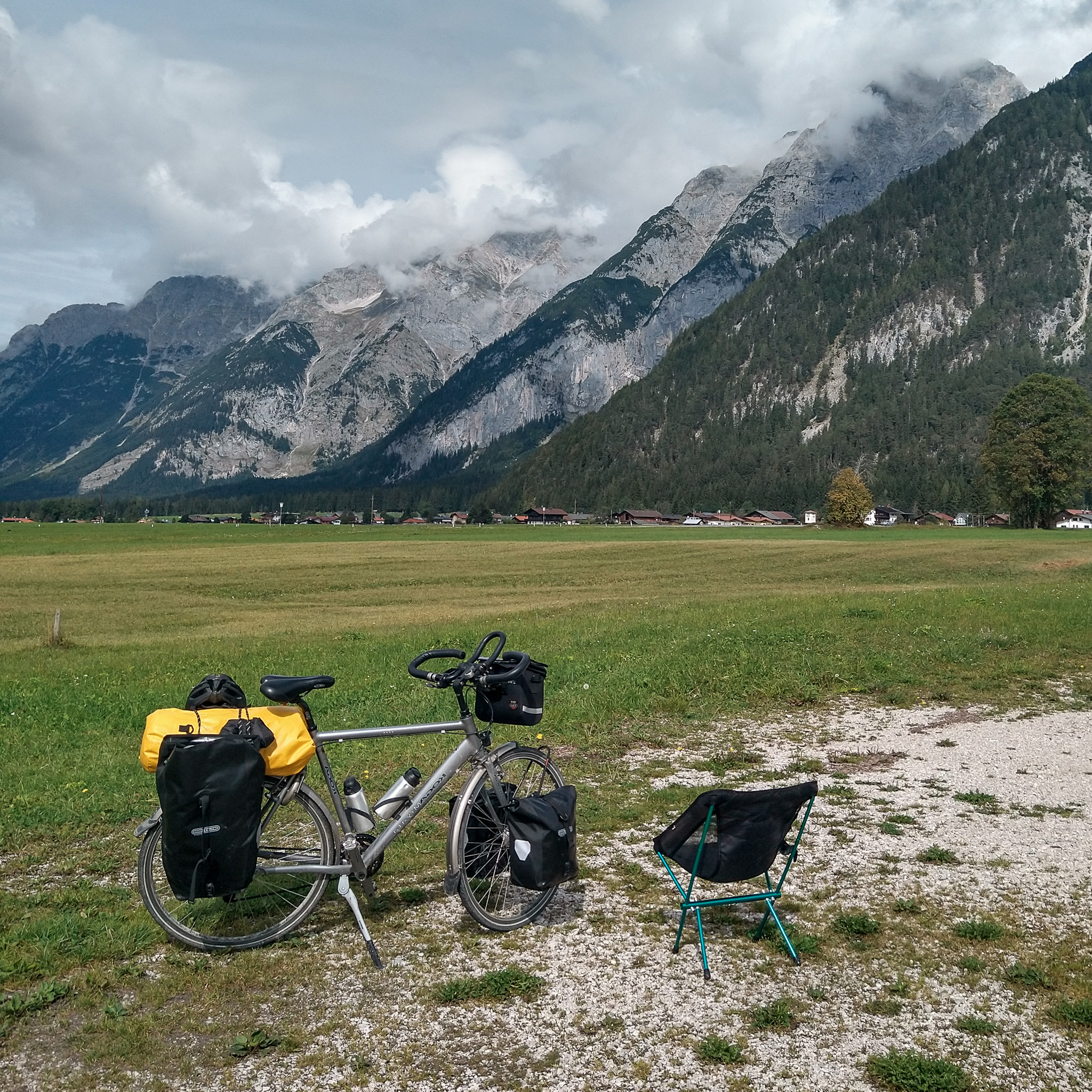
Nutrition: what to avoid?
Lack of variety – Your body needs different nutrients to perform well.
Not enough salt – Salt helps you stay hydrated longer and prevents cramps.
Carrying too much food – It’s better to restock every 2–3 days than to overload your bike.
Alcohol and greasy fast food – Obviously. I remember cycling in France when a café owner in Château-Gontier offered me a couple of shots of a homemade alcoholic drink. They tasted great, but afterward I was cycling through mud.
4. Cycling with poor posture
This one definitely belongs in the beginner bikepacking mistakes list.
As the saying goes, “Prevention is better than cure.” This is especially true for bikepacking—getting your cycling position wrong can lead to some very unpleasant problems.
A little personal story:
I arrived in the French coastal town of Le Tréport after about a week of cycling. Early that morning, the pain in my right knee kept getting worse. One of the worst things that can happen while bikepacking is dealing with aches and pains—you just want to keep going, but sometimes you have no choice but to stop and rest.
In this coastal village, I had to take three days of rest. I tried to figure out the cause of my painful knee, and it turned out that uneven weight distribution on the bike was likely the main problem.
The bottom line is that when one leg (and knee) ends up doing more work with every pedal stroke, all those repeated movements can lead to injuries over time.
I advise stopping as soon as you feel serious pain. Once again, prevention is better than cure. If your goal was to reach a certain place that day, it’s smarter to adjust your plan and stop a little earlier. Rest and proper stretching work wonders.
If your goal was to reach a certain place that day, it’s smarter to adjust your plan and stop a little earlier. Rest and stretching work wonders.
How to prevent cycling with poor posture?
Many bike shops offer a bike fitting. Using specialized tools and computer analysis, they can determine your optimal position on the bike. A proper bike fit not only reduces the risk of injury but also improves your cycling performance.
5. Don’t obsess over kilometers
And again, I can relate. This time, it was during my bikepacking trip from home to Venice, Italy.
About a third of the way through, I found myself becoming too focused on hitting a specific number of kilometers per day. The main reason was that I found that part of the trip a bit less scenic.
On top of that, I was eager to reach the Austrian Alps, knowing I would really enjoy that section.
Bikepacking is about enjoying the ride; if you’re constantly in a hurry, you might as well take the car.
Looking back, I realize this isn’t the right way to approach a bikepacking trip. My advice is to check your route in advance and make sure it’s one you’ll genuinely enjoy—otherwise, consider alternative paths.
Bikepacking is about enjoying the ride; if you’re constantly in a hurry, you might as well take the car.
Conclusion
So there you have it: five beginner bikepacking mistakes I made so you can avoid them:
- Taking too much stuff
- Using Google Maps for navigation
- Bad fuel, slow legs
- Cycling with poor posture
- Obsessing over kilometers
Good luck avoiding these mistakes— and enjoy the ride!
Feel free to check out my Instagram, where I regularly share travel stories, hiking guides, and tips and tricks. I’d love to have you along for the journey!
Do you want to keep reading? You can find all posts here.
– Bart
